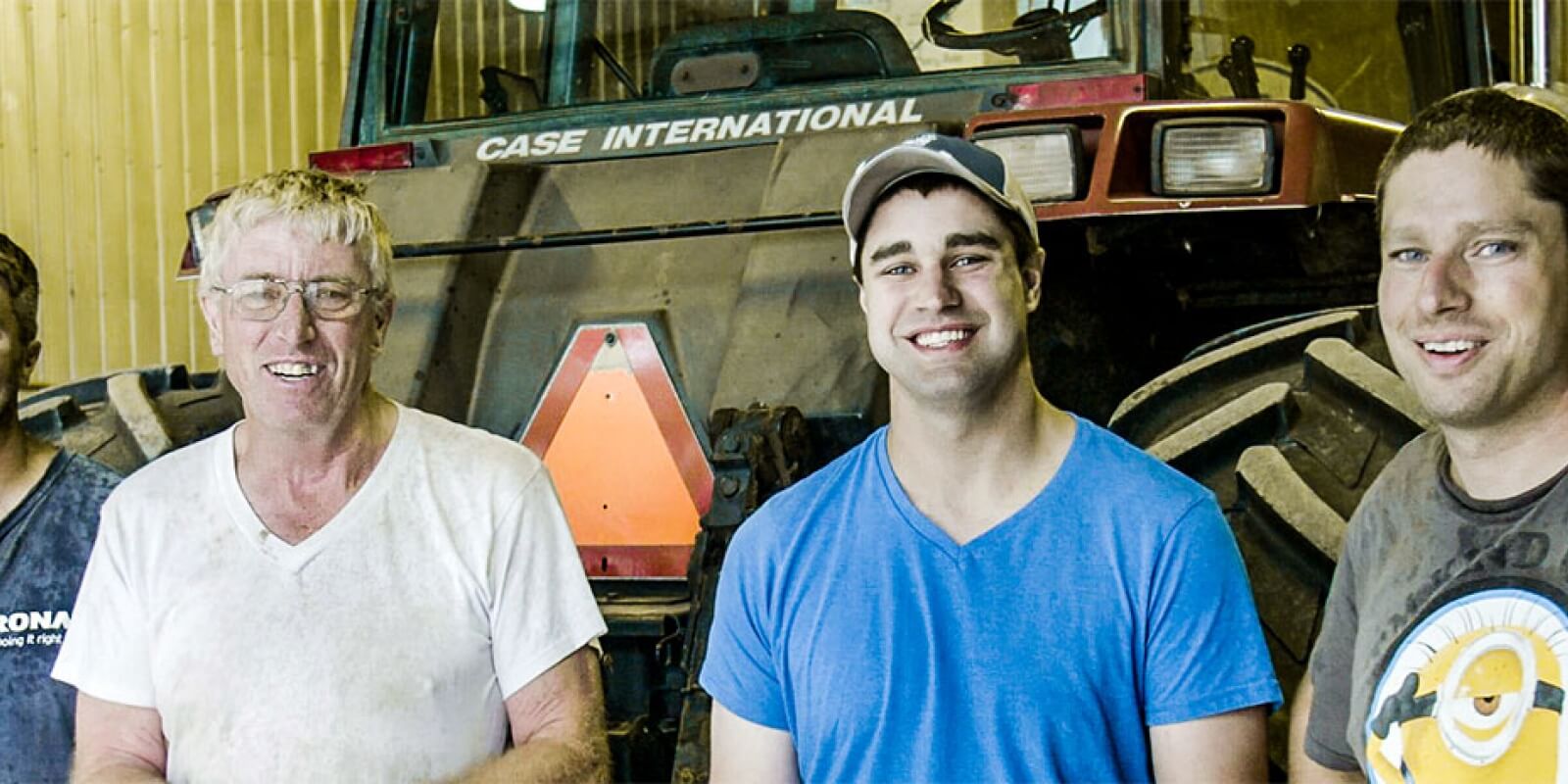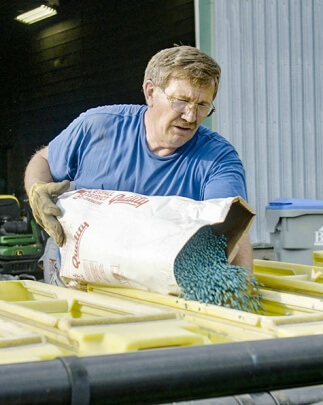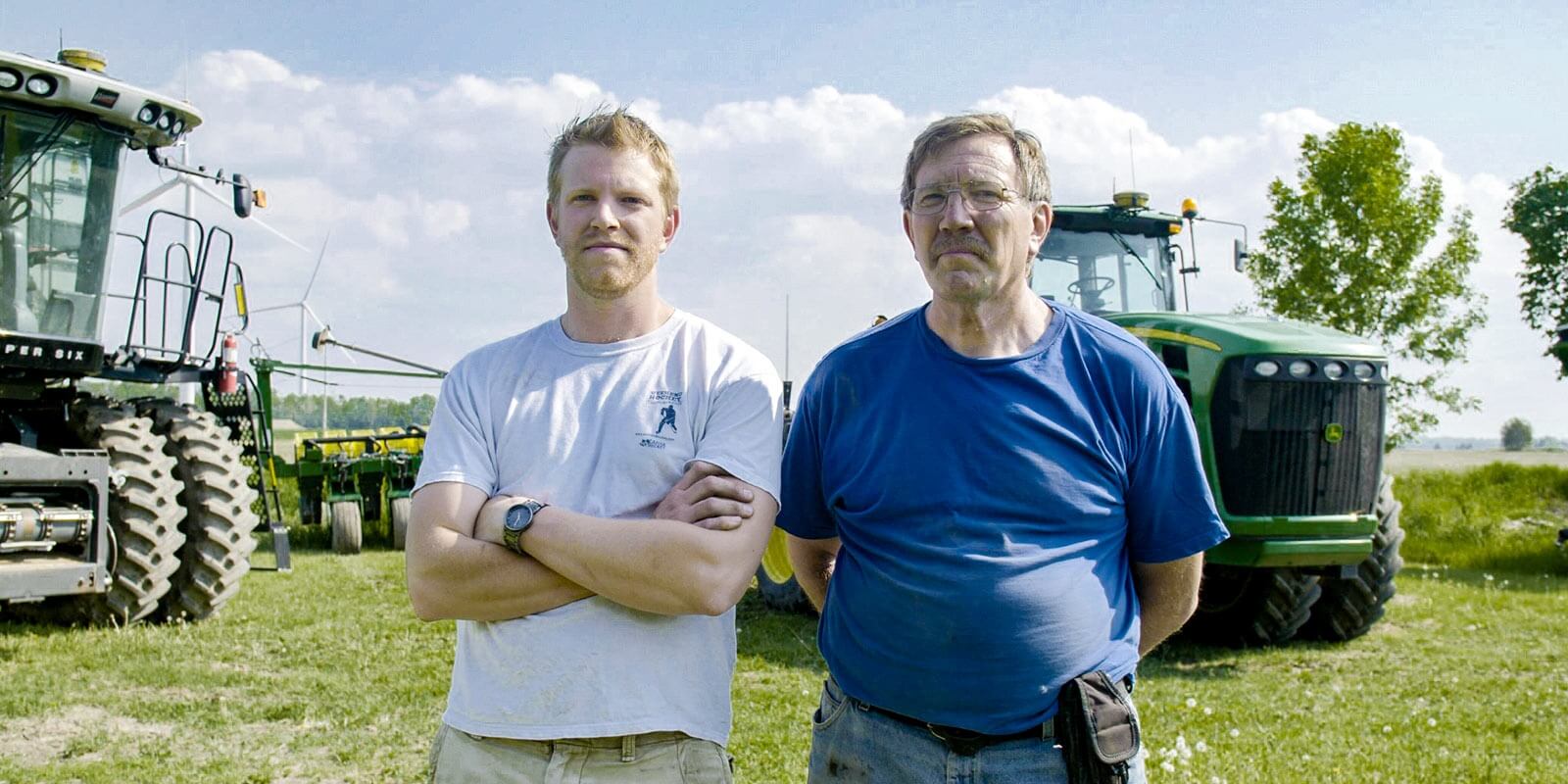You’re never too old to benefit from technology

For centuries, farmers have been passing on their knowledge and experience to the next generation, training their sons and daughters the nuances of modern agriculture. However, with the rapid growth in the use of agricultural technology, it seems the tables have turned. Today, more than one seasoned producer has discovered that there is still something to be learned from the second or third generation.
Grofield Farms, located near Walton, Ontario, is a good example. David Grofield readily admits that his dad wouldn’t have purchased a guidance and precision farming system if he hadn’t stayed on the farm with plans to ultimately take over the operation. Although David’s grandfather established the farm in 1967 as a dairy operation, the family has since replaced the dairy with poultry barns and switched to a rotation of corn, soybeans and wheat, which all benefit from GNSS guidance.
“We still have a WAAS unit in another tractor, but our main planter tractor is now equipped with a Topcon X30 console and an AGI-4 modular/steering controller with an RTK module,” David explains. “We also have our own base station, which is part of the TopNETlive network, and use a cellular connection to receive RTK corrections that provide accuracy to within about two centimeters.”
Grofield said satellite guidance has not only relieved stress and discomfort for him — since he has a bad shoulder that is a result of a childhood injury — but it has also allowed his dad to work longer hours.
“As it turns out, Dad really enjoys it,” David said. “Not only is planting less stressful, but it lets us work into the night when the time period for getting everything planted is already pretty short. The other thing is it lets you better monitor the planter, since you don’t have to watch where you’re driving.”

“Not only is planting less stressful, but it lets us work into the night when the time period for getting everything planted is already pretty short."

The Grofields aren’t the only Ontario father/son partnership to benefit from GNSS technology. About 30 miles away, Jeff Baker and his dad, Gary, have also adopted satellite guidance, as well as automatic row clutches on their corn planter. However, in this case, it was the father who got the ball rolling.
“I actually bought the first auto-steer system while Jeff was attending the university and I was farming by myself,” Gary said. “I was finally able to work 16 or 18 hours without feeling like I’d been beat up. I was still tired, but I wasn’t totally worn out at the end of the day. That easily sold me on auto-steer to the point where we have since added other parts of technology.”
As Gary explains, Baker farms dates back to the early 1900s, when his grandfather settled on the current farm. However, from the time his dad started farming until today, the farm has grown from approximately 185 acres to almost 1,000 acres that are rotated between corn, soybeans and wheat.

“The thing I like about the Topcon system, too, is that it works with other systems, whereas a few of these brands out there only work with their own brand of components.”

Like the Grofields, the Bakers use a Topcon X30 monitor and the TopNETlive real-time GNSS reference network to receive high accuracy positioning to within two centimeters and provide pass to pass/season to season repeatability. Plus, they have section-controlled clutches on their planter, which not only allows automatic shutoff at point rows and headlands, but allows them to do variable rate seeding of their corn crop.
The other problem, he said, is that some of the other systems he used in the past didn’t receive signals from the GLONASS satellites, which are operated by the Russian Aerospace Defense Forces. Hence, there could be dead spaces when the U.S.-owned GPS satellites weren’t overhead or available.
Jeff said the free WAAS signal that they used before converting to RTK presented its own challenges as well.
“We generally follow corn with soybeans and split the 30-inch corn rows with 15-inch soybean rows,” Jeff said, pointing out the importance of an accurate correction signal. “That means we only have about 7 ½ inches to work with in order to get the seed exactly where we want it. We certainly don’t want it on top of the old cornrow. We can get within five inches, but anything less than that and we risk having the depth wheel ride up on top of the old row or the root balls. Of course, that, in turn, affects the planting depth on that row of soybeans.
“The thing I like about the Topcon system, too, is that it works with other systems, whereas a few of these brands out there only work with their own brand of components,” Gary said. “When it’s time to spray or combine, it’s nice knowing that everything will work. It makes it a lot less stressful knowing that even with a 60-foot spray boom, you’re right on the line. As I get older, having to guess gets harder. You may be able to put a value on the seed, fuel and fertilizer savings; but I can’t really tell you what an hour’s worth of stress and worry is worth and how much that savings would amount to each year. Personally, I’m glad I don’t have to think about it.”


